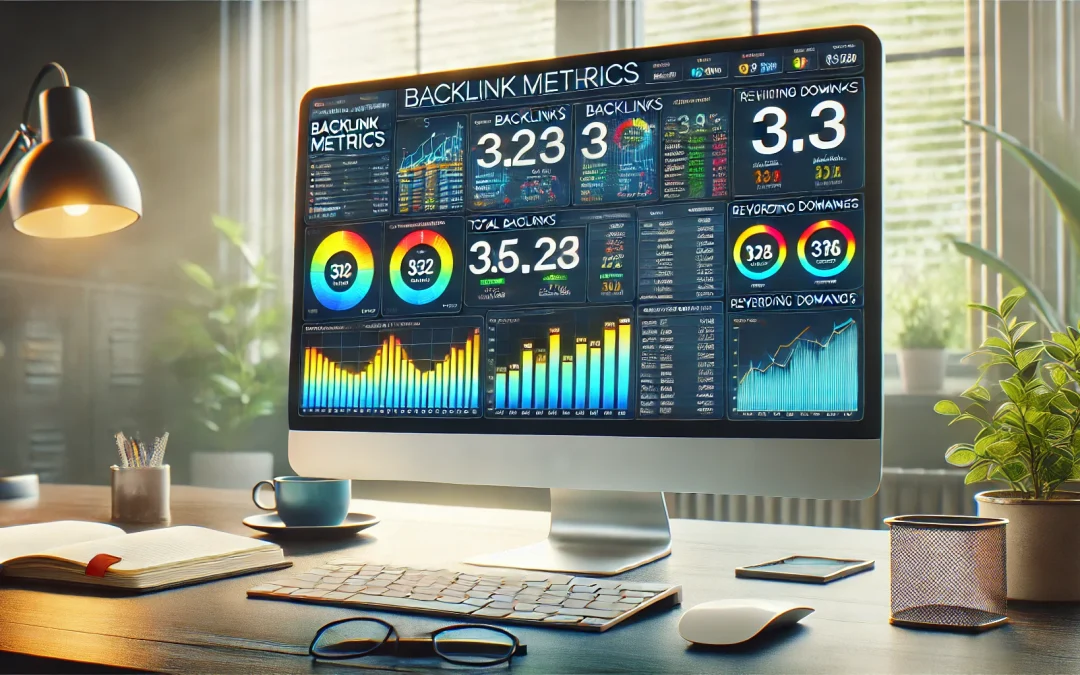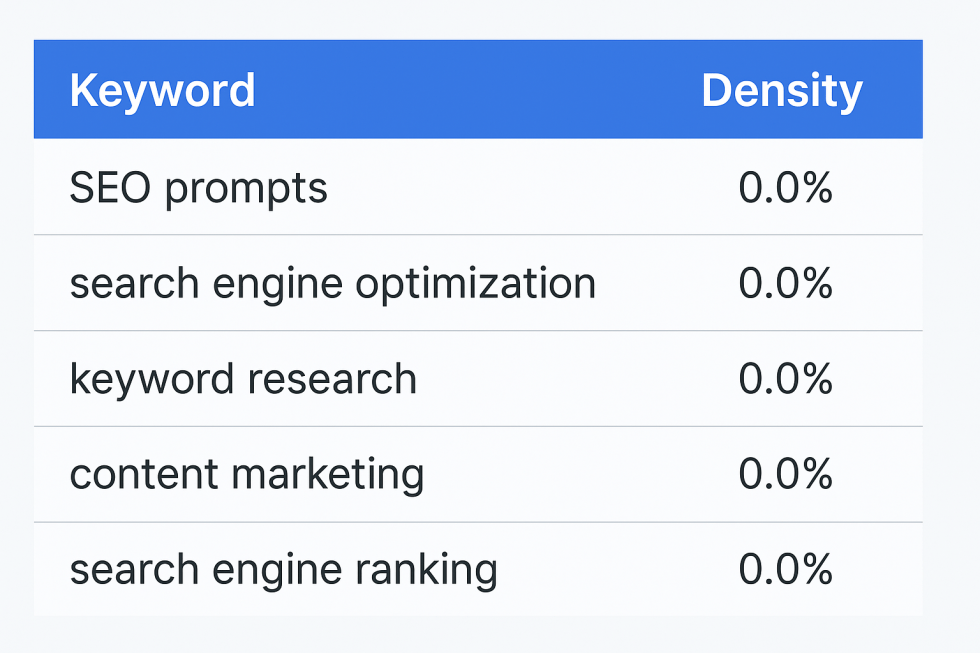
Backlinks are a cornerstone of SEO, serving as signals of credibility and authority that search engines use to rank websites. However, one common frustration among digital marketers and website owners is the discrepancy in backlink numbers reported by different tools and platforms. Whether you're using Ahrefs, SEMrush, Moz, or Google Search Console, you may notice varying backlink counts, leaving you puzzled about which one is accurate.
This blog post explores the reasons behind these differences, the methodologies used by various platforms, and how to interpret backlink data effectively for your SEO strategy.
**What Are Backlinks and Why Do They Matter?**
Before diving into the discrepancies, let's briefly review backlinks and their importance. Backlinks, also known as inbound or incoming links, are links from one website to another. These links act as votes of confidence, signaling to search engines that the linked-to content is valuable and trustworthy.
Key reasons backlinks matter:
-
Search Engine Rankings: High-quality backlinks improve your website's authority, helping it rank higher in search results.
-
Referral Traffic: Backlinks from popular sites can drive significant traffic to your site.
-
Brand Visibility: Being linked by authoritative sources enhances your brand's credibility and visibility.
**Why Different Platforms Show Different Backlink Numbers**
The variation in backlink counts between tools is due to differences in how each platform collects, processes, and presents data. Below are the key factors contributing to these discrepancies:
**1. Data Collection Methods**
Backlink analysis tools use web crawlers to discover links. These crawlers mimic search engines by scanning websites and identifying links pointing to other domains. However, not all crawlers are created equal:
-
Crawl Coverage: Some tools have larger databases and can crawl more websites, uncovering more backlinks.
-
Crawl Frequency: Tools that crawl the web more frequently can identify new backlinks faster.
-
Crawl Depth: The extent to which a tool examines subpages affects how many links it finds. Shallow crawlers may miss deep internal links.
For example, Ahrefs is known for its extensive crawler, often discovering more backlinks than smaller tools. In contrast, Google Search Console provides only the backlinks that Google deems relevant for indexing.
**2. Indexing Policies**
Different platforms use unique criteria to decide which backlinks to include in their reports. Not all backlinks are indexed because:
-
Some links are nofollowed, signaling to crawlers not to pass link equity.
-
Certain links come from spammy or low-authority sites that tools may choose to exclude.
-
Tools might filter out links from duplicate content or redundant pages.
For instance, Moz's Link Explorer prioritizes high-quality links in its index, potentially leading to lower backlink counts compared to Ahrefs or SEMrush.
**3. Filtering and Metrics**
Backlink tools often use filters to display links based on specific metrics:
-
Domain Authority (DA) or Domain Rating (DR): Tools may exclude links from low-authority sites by default.
-
Unique Linking Domains: Some platforms prioritize counting unique domains rather than individual links.
-
Historical vs. Live Data: Tools like SEMrush may show a mix of historical and active backlinks, while others like Google Search Console focus on live links.
As a result, if your tool of choice emphasizes high-authority or unique domains, you may see lower backlink numbers.
**4. Differences in Timeframes**
The timeframe in which a tool collects data impacts the backlink count. For example:
-
A tool that updates its index monthly may miss backlinks created or removed in the interim.
-
Google Search Console data may have a lag, showing backlinks from weeks or months ago.
This discrepancy in data freshness can lead to differing numbers between tools.
**5. Nofollow and Toxic Links**
Some platforms include nofollow and toxic links in their backlink reports, while others exclude them:
-
Nofollow Links: Although these don't pass link equity, they still appear in some tools' backlink counts.
-
Toxic Links: Tools like SEMrush provide a toxicity score, categorizing certain backlinks as harmful and potentially excluding them from total counts.
**6. Proprietary Algorithms**
Each tool has its own proprietary algorithm to determine which backlinks are significant:
-
Ahrefs uses Domain Rating (DR) to assess the quality of linking domains.
-
Moz employs Domain Authority (DA) and Page Authority (PA) for similar purposes.
-
SEMrush assigns a Toxicity Score to identify potentially harmful links.
These algorithms influence which backlinks are indexed and reported.
**7. Geographic Limitations**
Crawlers often prioritize websites based on geography, language, or popularity in certain regions. For example:
-
A tool focusing on U.S.-based sites may miss backlinks from international domains.
-
Regional platforms like Baidu Webmaster Tools prioritize backlinks relevant to their specific audience.
**Case Study: Comparing Backlink Data Across Tools**
Let's consider an example where a website owner analyzes backlink data from Ahrefs, SEMrush, Moz, and Google Search Console:
-
Ahrefs: Reports 12,000 backlinks and 1,500 referring domains.
-
SEMrush: Shows 9,800 backlinks and 1,200 referring domains.
-
Moz: Displays 7,500 backlinks and 1,000 referring domains.
-
Google Search Console: Lists 5,000 backlinks and 900 referring domains.
What explains these differences?
-
Ahrefs likely uncovered more links due to its extensive crawler.
-
SEMrush may have filtered out toxic or inactive links.
-
Moz's focus on high-quality domains reduced the total backlink count.
-
Google Search Console includes only the links Google considers relevant.
This example highlights the importance of using multiple tools for a comprehensive analysis.
**How to Interpret Backlink Data Effectively**
Instead of fixating on exact backlink numbers, focus on actionable insights. Here's how to make sense of the data:
**1. Prioritize Quality Over Quantity**
A large number of backlinks isn't always better. High-quality backlinks from authoritative and relevant sites carry more weight in SEO than numerous low-quality links.
**2. Track Referring Domains**
Referring domains provide a clearer picture of your backlink diversity. Aim for backlinks from a wide range of reputable domains rather than multiple links from a single site.
**3. Identify Link Opportunities**
Use tools to uncover linking gaps:
-
Analyze competitors' backlinks to identify opportunities.
-
Look for content that attracts links and replicate its success.
**4. Monitor Toxic Links**
Regularly review your backlink profile for toxic or spammy links that could harm your SEO performance. Tools like SEMrush and Ahrefs offer toxicity reports to help you identify and disavow harmful links.
**5. Compare Trends Over Time**
Instead of focusing on single snapshots of backlink data, monitor trends to see how your link-building efforts evolve over time.
**How to Use Backlink Data for [SEO](https://bkthemes.design/seo) Success**
Once you've gathered and interpreted backlink data, apply it to improve your SEO strategy:
**1. Build Relationships with High-Authority Sites**
Focus on acquiring backlinks from authoritative websites in your niche. Guest blogging, outreach, and content partnerships are effective ways to earn these links.
**2. Optimize Internal Linking**
A strong internal linking structure enhances your site's crawlability and helps distribute link equity effectively.
**3. Improve Anchor Text Diversity**
Ensure your backlink profile contains varied and natural anchor text to avoid penalties and maximize relevance.
**4. Conduct Regular Audits**
Perform periodic backlink audits to remove or disavow toxic links and ensure your link profile aligns with Google's guidelines.
**5. Create Link-Worthy Content**
Invest in high-quality, shareable content such as guides, infographics, and case studies that attract organic backlinks.
**The Importance of Combining Backlink Tools**
No single tool can provide a complete picture of your backlink profile. Combining multiple tools allows you to leverage their unique strengths:
-
Use Ahrefs for extensive backlink discovery.
-
Use SEMrush for toxicity analysis and competitor comparison.
-
Use Moz for tracking high-authority links.
-
Use Google Search Console for a direct view of what Google considers important.
By synthesizing data from various platforms, you can gain a holistic understanding of your website's backlink profile and craft a more effective SEO strategy.
**Conclusion**
The variation in backlink numbers across different platforms is a result of differences in data collection methods, indexing policies, algorithms, and filters. Understanding these nuances empowers you to use backlink data effectively without being misled by the numbers.
Rather than focusing on the discrepancies, concentrate on deriving actionable insights to enhance your website's SEO performance. By prioritizing quality backlinks, monitoring trends, and leveraging multiple tools, you can build a robust and authoritative backlink profile that drives long-term success. If you need help in building a backlink profile. just contact me
📧 Stay Updated
Get the latest web development tips and insights delivered to your inbox.




